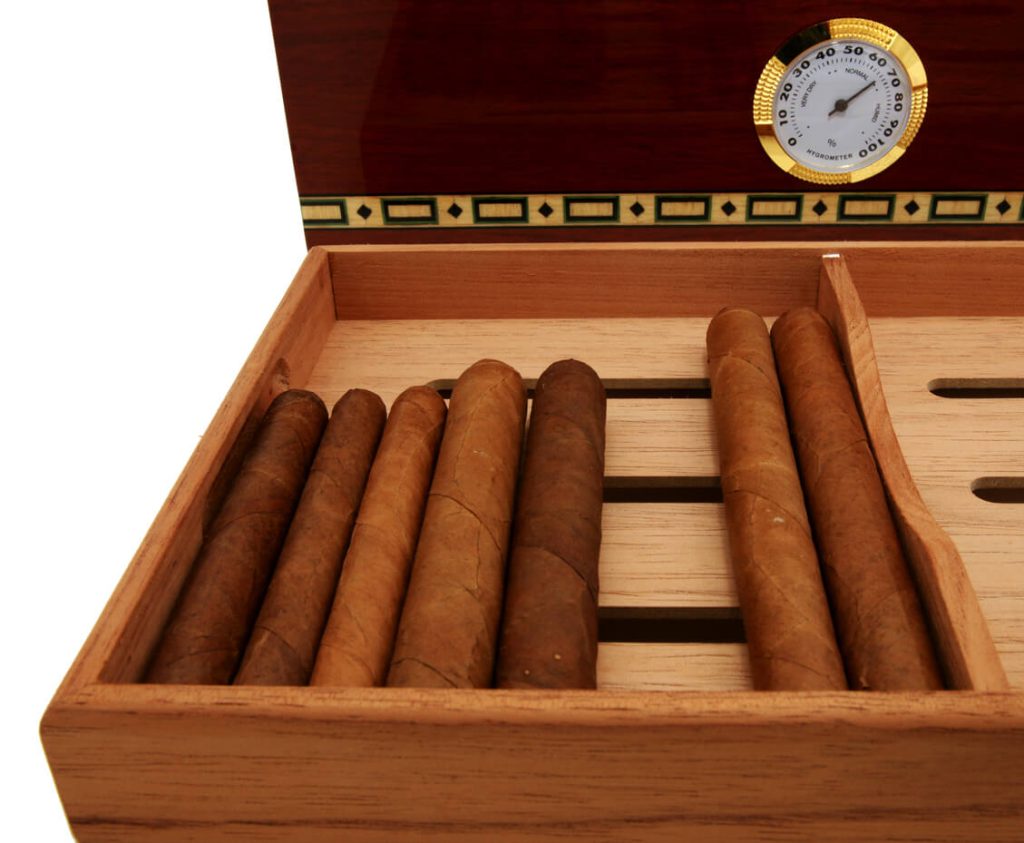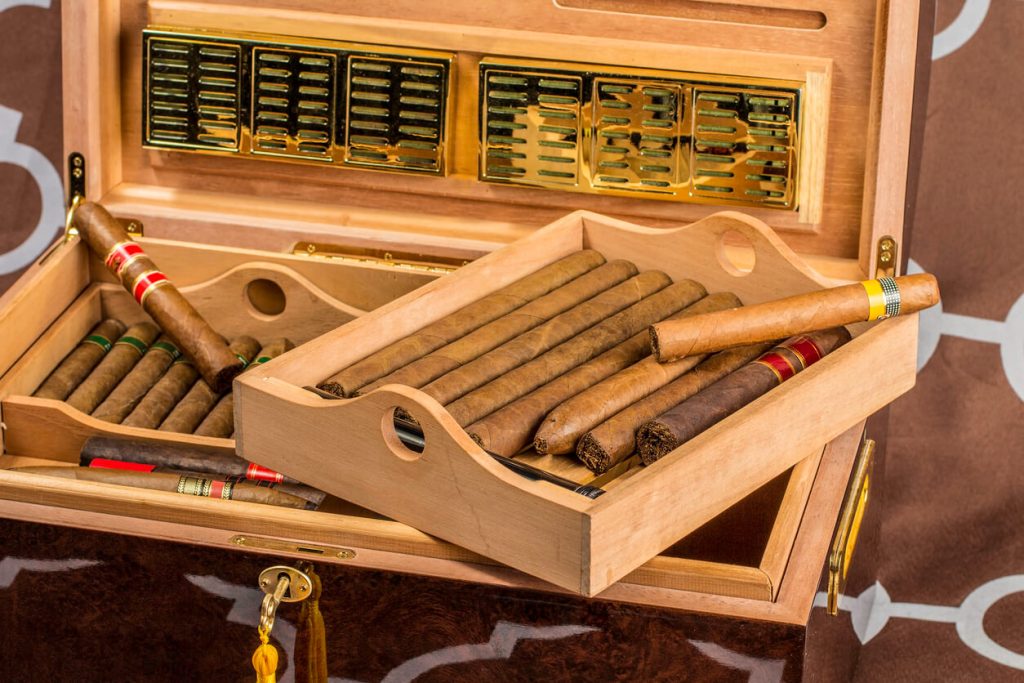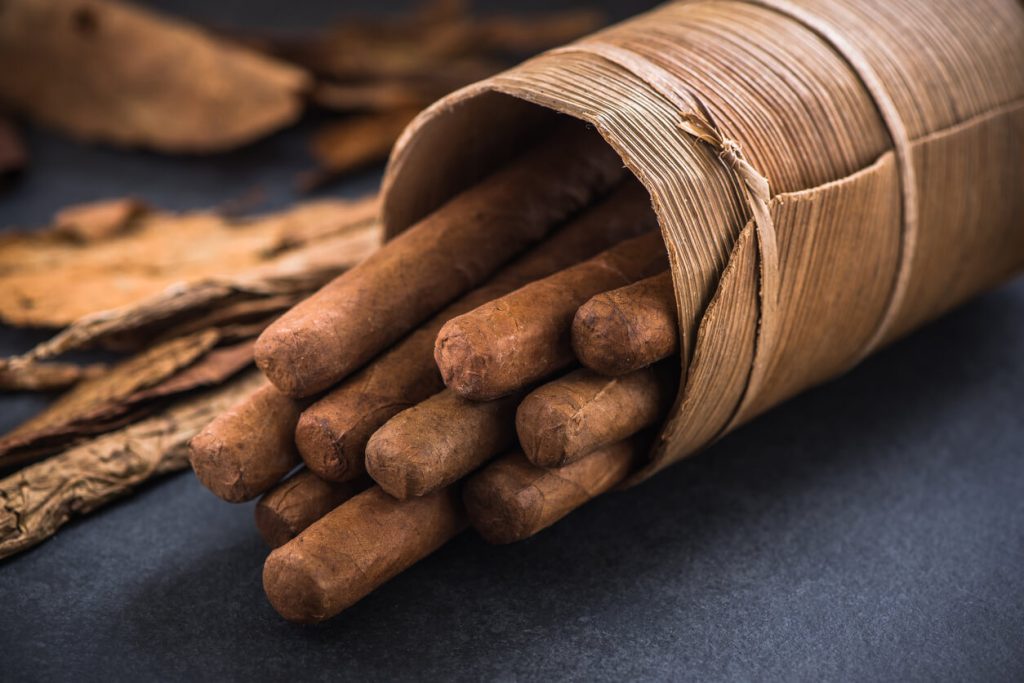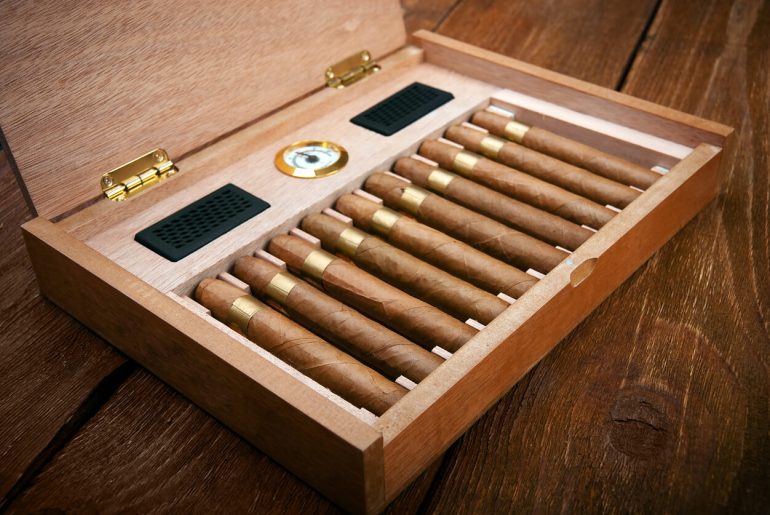A properly seasoned cigar humidor is more than just a box; it’s a haven for your prized stogies, a sanctuary that ensures they age gracefully and retain their natural flavors. However, before your humidor can fulfill this vital duty, it needs to undergo a process known as seasoning. This comprehensive guide will delve into the step-by-step instructions to help beginners successfully season their wooden cigar humidors, creating an environment where cigars can flourish and delight your senses.
Understanding the Importance of Relative Humidity
Cigars are intricate creations of carefully aged tobacco leaves that have been artfully blended to achieve a specific flavor profile. A controlled environment is paramount to preserve the flavors, aromas, and textures that cigar makers intended. This is where the concept of seasoning comes into play. Seasoning a new humidor prepares its wooden interior to maintain the precise humidity levels for cigars to flourish. A properly seasoned humidor will let your cigars thrive for years to come.
Calibrate the Hygrometer First
Placing your cigars into the humidor immediately is tempting, but patience is your ally here. A humidor that has yet to undergo the seasoning process is yet to prepare to protect your cigars. Think of it as a sponge eager to absorb moisture.
Suppose cigars are placed inside before the wood has been given its fair share of moisture or humidity. In that case, the wood might selfishly extract moisture from the cigars, jeopardizing their integrity and flavors. You’ll end up with brittle and dry cigars. By seasoning your humidor, you’re gifting it the ability to maintain the ideal humidity that your cigars crave.
A small but significant task awaits before embarking on the seasoning journey: calibrating your hygrometer. This instrument, essential for monitoring humidity, ensures accurate readings.
While hygrometers come in two types—analog and digital—digital variants offer more precision. Although factory calibration is done, it’s advisable to verify it yourself. Here’s how to ensure your hygrometer is on point:
Supplies you’ll need:
- Table salt
- Distilled water
- A bottle cap or shot glass
- Resealable Ziploc-style bag
- Screwdriver (for analog hygrometers)
The Calibration Process
- Preparation and Setup: Place one teaspoon of table salt into a bottle cap or shot glass. Dampen the salt with distilled water, but don’t let it dissolve entirely—you want a ‘cake’ of crumbly salt. Place the hygrometer and the salt-filled cap/shot glass inside a resealable plastic bag.
- The Waiting Game: Seal the bag and let it rest for around eight to twelve hours. During this period, the salt’s humidity should stabilize at approximately 75%, creating a controlled environment for calibration.
- Check and Adjust: After waiting, check your hygrometer’s reading. If it’s hovering around 75%, your hygrometer is accurate. If it’s off, take note of the discrepancy. If you’re using an analog hygrometer, a screwdriver will help to adjust the reading according to the deviation.
By calibrating your hygrometer, you ensure it’s a trustworthy companion on your seasoning journey. Accurate readings lay the foundation for success.
Preparing Your Cigar Humidor for Seasoning

A humidor is much more than a place to store your cigar collection. It is a necessary investment to ensure their quality. The seasoning method depends on your personal preference.
1. Gather Your Supplies
Preparing for seasoning requires the right tools, like any worthy endeavor.
| Item | Notes |
| Distilled water | Never use tap water or bottled water. |
| Kitchen sponge | Make sure it’s new and clean. |
| Plastic bag | A clean, large plastic bag is perfect for storing the sponge while you’re seasoning your humidor. |
| Paper towels | Paper towels are handy for absorbing excess water from the humidifier and cleaning up any spills. |
| One large bowl | A large bowl is perfect for soaking the sponge and humidifier. |
2. Temporarily Bid Your Cigars Adieu
You can begin by gently relocating your cherished cigars to a temporary storage solution, ensuring they remain safe during seasoning. Storing cigars in a mason jar with a Boveda pack is a simple yet effective solution.
3. Final Hygrometer Check
Before proceeding, take a moment to verify the accuracy of your hygrometer by comparing its readings to a trusted humidity source. Follow the steps we’ve provided in the previous section.
Step-by-Step Seasoning Processes for a Wooden Humidor
There are two methods to season a wooden humidor properly. We’ll look at the more passive way of allowing the humidor to absorb moisture naturally. Next is the ‘active’ method of wiping and seasoning your humidor directly with water.
A. The Passive Absorption Method
Once you’ve calibrated your hygrometer, seasoning your cigar humidor is next.
- First, soak a sponge in distilled water (or propylene glycol solution) until entirely saturated. Then, wring out the excess water so the sponge isn’t dripping but still very wet. Place the sponge in the bottom of your humidor on top of a plastic bag. This will help prevent the wood from becoming too saturated.
- Next, soak the humidification unit’s sponge (humidifier) in distilled water (or propylene glycol solution) until entirely saturated. Then, place it face down on paper towels for 20-30 minutes to drain the excess water. After that, put the humidifier in the humidor with the hygrometer. Close the humidor and let it sit for 48 hours. If your humidor came with any wooden trays or dividers, make sure to put them in so they can also season.
- After 48 hours, check the humidity level in the humidor. It should be between 70% and 75%. If it’s not, continue to season the humidor for another 24 hours. After 72 hours, the humidity level should be close to 70%. If it’s at 72-73 percent, that’s fine. Your cigars will absorb a little moisture when you put them in. If it’s higher than 74 percent, wait for another 24 hours, and it should fall to the right level.
- Once the humidity level is correct, add your cigars to the humidor. Store your cigars in cedar sleeves or boxes to protect them from damage. Throughout the seasoning process, keep the lid closed.
Propylene Glycol vs. Water
If you’re looking for a more stable solution for your humidor, use propylene glycol instead of distilled water. Propylene glycol is an organic compound commonly used in humidors as a stabilizing agent. It coats the wood with a layer of natural enzymes that absorb moisture when the humidity exceeds 70% and emit moisture when it drops below 70%. This helps to prevent the wood from drying out or becoming too humid, which can lead to mold and bacterial growth.
To use propylene glycol in your humidor, you’ll need to mix it with distilled water at a 50:50 ratio. You can find bottles of the pre-mixed solution at most cigar shops. Once you have your solution, fill the sponge with it and place it in the humidor. The sponge will help to regulate the humidity in the humidor, keeping your cigars fresh and flavorful.
Here are some additional benefits of using propylene glycol in your humidor:
- It is non-toxic and odorless, so that it won’t affect the taste of your cigars.
- It is resistant to mold and bacteria growth.
- It is a good conductor of heat, which helps to keep the temperature in the humidor consistent.
- It is relatively inexpensive and easy to find.
B. Wipe-Seasoning Cigar Humidors

Spanish cedar eagerly absorbs moisture, which is where a slightly dampened sponge or paper towel comes into play. Gently wipe down the interior walls of the humidor. This step serves a dual purpose: it prepares the wood for moisture absorption while preventing over-saturation.
If you want to season your cigar humidor quickly, use the wipe-down method. It’s less popular than the traditional method but can save you at least 24 hours of waiting. Just be careful not to over-saturate the wood, or it could warp.
- To start, soak a sponge in distilled water. Wring it out until it’s damp but not dripping. You want it to be wet enough to dampen the wood but not so wet that it warps. You can buy seasoning wipes if you’re worried about using too much water. They’re pre-moistened towelettes that are specially made for seasoning humidors.
- Once the sponge is ready, remove the hygrometer and cigar humidifier from the humidor.
- Wipe down all of the exposed surfaces inside the humidor with the sponge. Be careful not to create puddles or pools of water. You want to dampen the wood.
- Once you’re finished, wipe down any wooden dividers or trays that came with the humidor.
- Place the hygrometer and cigar humidifier back in the humidor and close it for 24 hours. While you’re waiting, calibrate your hygrometer.
After 24 hours:
- Soak the cigar humidifier and drain away the excess liquid.
- Open the humidor and place the hygrometer and cigar humidifier back inside.
- Close the humidor for another 24 hours.
After 24 hours, the inside of the humidor should be dry, and your hygrometer should read 72-73 percent humidity; if it doesn’t, close it up and give it more time. If it does, you can go ahead and place your cigars inside.
Here are some dangers to keep in mind when using the wipe-down method:
- Over-saturating the wood can warp it. Spanish cedar is hygroscopic, meaning it readily absorbs moisture.
- If the wood warps, the lid won’t be able to provide a strong seal. This means the humidor will gradually lose moisture and dry out your cigars.
- The wipe-down method may not be effective for humidors made from certain woods, such as Spanish cedar.
If you’re uncomfortable with the wipe-down method, you can always use the traditional (passive) method. It takes longer, but it’s a safer way to season your humidor.
Return your Cigars to the Humidor

After achieving a humidity reading of 75% to 80% RH on your hygrometer, it’s time to populate your humidor with your cherished cigars. To ensure stable conditions, we suggest filling the box to at least half its total capacity and maintaining it at this halfway point.
However, be cautious not to overcrowd the humidor with cigars. Leaving around 20% of the interior space unoccupied is ideal. This vacant space encourages better airflow and humidity distribution, ensuring all stored cigars are properly humidified.
Embarking on Your Humidor Journey: Additional Tips
Beyond the step-by-step instructions, here are a few additional tips to ensure you season a humidor properly:
- Invest in a Digital Hygrometer: Consider investing in a digital hygrometer for precise humidity monitoring. This modern tool provides real-time readings, allowing you to make informed adjustments to your humidor’s environment.
- Discover the Magic of Boveda Packs: Some aficionados opt for Boveda packs as an alternative to distilled water. These packs release controlled humidity levels, simplifying the seasoning process and reducing the need for constant monitoring.
- Mind the Lid: Keeping the humidor’s lid securely closed throughout the seasoning process is imperative. This practice captures the moisture, facilitating uniform absorption and ensuring a successful seasoning outcome.
Avoid Common Pitfalls

As with any endeavor, avoiding common pitfalls can make a difference. Here are a few pointers to ensure your seasoning journey is smooth and successful:
- Be Patient: Rushing through the seasoning process can lead to inadequate moisture distribution. Give your humidor ample time to absorb the necessary moisture evenly.
- Beware of Tap Water: It’s advisable to steer clear of tap water, as its mineral content could potentially harm the wood and contribute to unwelcome mold growth.
- Moderate Moisture: While you want to introduce moisture, avoid over-saturation, which can lead to wood distortion.
Conclusion
Properly seasoning your humidor is a journey of nurturing and commitment to the well-being of your cigars. The wood’s fibers will absorb moisture, resulting in an environment that maintains the perfect humidity levels for your cigars to flourish. Seasoning is not just a practical task; it’s a cherished ritual showcasing your dedication to cigars’ artistry. By taking these deliberate steps, you’re enhancing your cigars’ flavors, aromas, and textures, elevating your smoking experience to new heights.
As you season your humidor, remember that you’re not just cultivating an environment but fostering a connection between craftsmanship and enjoyment. The well-seasoned humidor becomes a testament to your care, dedication, and appreciation for the finer things in life. So, embrace the process, follow these steps carefully, and watch your cigars thrive in their optimal sanctuary. The journey of seasoning is a powerful reminder that even in the realm of cigars, the path to perfection is paved with patience and a touch of artistry.

